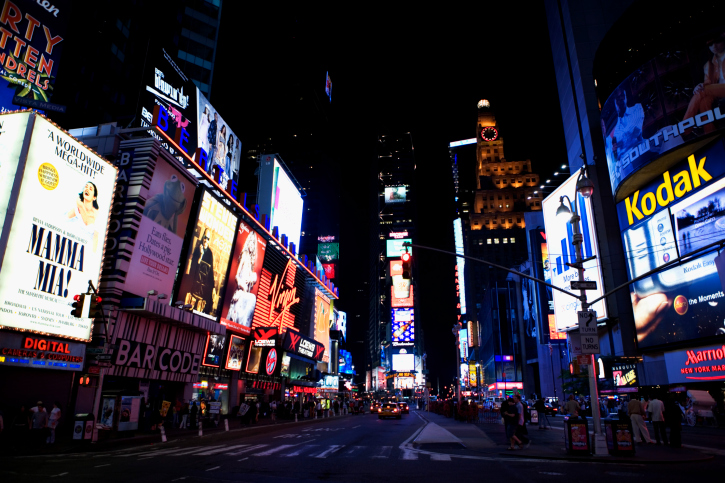
The United States has always prided itself as one of the most innovative countries in the world. In fact, patenting in a wide range of scientific fields has been on the rise in the U.S., according to a recent study by the Brookings Institution. Even better for the economy, these patents are more valuable and are originating in more areas than ever before.
While patents are coming out of more areas, only a handful of cities create most of patents in the U.S. According tothe study, more than half of patents are developed in just 20 metropolitan areas. Based on the data provided by Brookings, 24/7 Wall St. reviewed the 10 metropolitan areas with the most average patents per million residents between 2007 and 2011.
Click here to see the 10 most innovative cities
According to Jonathan Rothwell, associate fellow at Brookings Institution who co-authored the study, the most important criterion in determining whether a metro area produces many patents is whether the area is home to major research institutions, especially those with highly regarded programs in science, technology, engineering and mathematics (STEM). Rothwell pointed out that the metro areas where patents are granted tend to have high levels of attainment in STEM fields.
While the proximity of STEM programs appears to be critical, Rothwell noted that only 2% of patents are actually granted to people who work in university settings. Meanwhile nine out of 10 patents come from U.S. corporations. Instead of generating patents, these universities create workforces with the necessary skills to find employment or even start companies in the area.
Companies that file patents regularly such as International Business Machines Corp. (NYSE: IBM) and Hewlett-Packard Co. (NYSE: HPQ) dominate employment in many of these innovative metro areas. The top 100 patent owners account for one-third of all patent holders. Recently, patent growth has taken place in smaller companies focusing on fields such as software engineering, Rothwell said.
The effect that patenting has had on these metropolitan areas is evident. Economic growth in these areas occurred at faster rate than the national average between 1980 and 2010, according to the study. For instance, productivity, measured by gross domestic product per worker, grew 3.3% annually in San Jose, one of the most innovative cities, during those years, compared to 1.4% nationwide.
In addition, these areas generally have higher median household incomes, compared to the country as a whole. 24/7 Wall St. also found that likely is due to higher educational attainment and the availability of higher-wage jobs.
Rothwell explained that the success of cities that have a focus on innovation should send a message to planners. “It is maybe a warning to cities that have focused their public spending efforts and development efforts on things like stadiums and convention centers that are really about increasing consumption in the metropolitan areas but don’t really contribute to the fundamental capacity to create new technologies, inventions or industries,” Rothwell said.
Based on the data provided by the Brookings Institution, 24/7 Wall St. identified the 10 metro areas with the highest number of patents filed per million people between 2007 and 2011. For each of those metro areas, we reviewed the average number of patents granted annually during that period and the fields where these patents were produced. We also looked at the higher-education institutions in the metro areas with top-ranked science programs at universities, according to the National Research Council. The top employers in the region were noted to reflect what organizations were likely filing the patents.
These are the 10 most innovate metropolitan areas in the country.
10. Santa Cruz-Watsonville, Calif.
> Patents per million residents: 1,204
> Patents per year: 310
> Industry with most patents: Computer hardware and peripherals
Santa Cruz is one of the smaller cities on our list, with the metro region containing less than 300,000 residents. Because of its small population, its 310 patents per year average was enough to make it one of the most innovative places in the country. Santa Cruz is home to UC Santa Cruz, which is by far the largest employer in the city, employing 7,364 people as of 2011. The next biggest nongovernment employer in the city, electronics company Plantronics, employed 505 people.
Also Read: Cities Paying the Most for Sports Teams
9. Austin-Round Rock-San Marcos, Texas
> Patents per million residents: 1,503
> Patents per year: 2,497
> Industry with most patents: Computer hardware and peripherals
A host of large technology companies such as Dell Inc. (NASDAQ: DELL) and Advanced Micro Devices Inc. (NYSE: AMD), among others, employ thousands in the Austin-Round Rock-San Marcos region. Other major companies such as General Motors Co. (NYSE: GE), Apple Inc. (NASDAQ: AAPL) and Samsung have announced plans to bring more jobs to the area. The growth of technology jobs provided by these companies also has led to the creation of startups, further building on Austin’s high-tech reputation. The Austin area is home to the main campus of the University of Texas, one of the most prestigious public universities in the country.
8. San Francisco-Oakland-Fremont, Calif.
> Patents per million residents: 1,638
> Patents per year: 7,003
> Industry with most patents: Biotechnology
Between 2007 and 2011, an average of more than 7,000 patents a year were filed in the San Francisco area, with more patents filed in the field of biotechnology than any other field. San Francisco has companies in a wide range of fields, but biotechnology is its biggest source of patents, and several biotech and medical research companies have major presences in the bay area. The San Francisco area is home to 33 top-ranked science programs — more than any other metropolitan area with the exception of Boston — with the University of California-Berkeley the school with highest number of top-ranked programs of any other institution.
7. Ann Arbor, Mich.
> Patents per million residents: 1,697
> Patents per year: 590
> Industry with most patents: Motors, engines and parts
Ann Arbor has a highly educated population, with more than 50% of adults having at least a bachelor’s degree — more than any metropolitan area but Boulder, Colorado. Also, 40% of the region’s workers work in the education sector — many at the University of Michigan-Ann Arbor, which employs more than 16,000 people. The university hosts 12 separate top-rated science programs, the fifth-most of any metro region in the country. Last year, a new patent office opened in Detroit, which, according to Michigan Congressman Gary Peters, stands to help the region get its patents through faster. The automotive field was the most innovative, filing more patents in Ann Arbor than any other field. But with major employers including Toyota Motor Corp.’s (NYSE: TM) 1,500 employee R&D center, this is perhaps to be expected.
6. Poughkeepsie-Newburgh-Middletown, N.Y.
> Patents per million residents: 1,829
> Patents per year: 1,226
> Industry with most patents: Semiconductor devices
More than 1,800 patents per million residents were filed by Poughkeepsie residents between 2007 and 2011. While Poughkeepsie is primarily known as a manufacturing town, the area also has some technology employers. IBM, which in 2012 filed for more patents than any other company worldwide, has a briefing center in the Poughkeepsie area. The United States Military Academy at West Point is also located in the Poughkeepsie metropolitan area. The median household income in Poughkeepsie in 2011 was nearly $67,000 a year, the 10th highest of all metro areas in the country.
5. Boulder, Colo.
> Patents per million residents: 2,274
> Patents per year: 666
> Industry with most patents: Communications
The Boulder area has increasingly been home to technology companies in recent years. Like many of the metro areas on this list, IBM has a large presence in the area, with several thousand employees working in Boulder. Other companies among the top 10 employers in the region include computer technology company Oracle Corp. (NASDAQ: ORCL) and data storage company Seagate Technologies PLC (NASDAQ: STX). In addition, the area has been home to countless technology startups in recent years. Boulder is home to the main campus of the University of Colorado, the largest university in the state and the largest employer in the metropolitan area. Close to 60% of Boulder adults have at least a bachelor’s degree, the highest proportion in the country.
Also Read: Cities Where People Can’t Find Work
4. Corvallis, Ore.
> Patents per million residents: 2,319
> Patents per year: 194
> Industry with most patents: Semiconductors
Corvallis, Oregon, has one of the most educated populations in the country. It has the fourth-highest proportion of adults with a bachelor’s degree at 48.5%, compared to the U.S. average of 28.5%. The region’s productivity has exploded in the past two decades, increasing by an average of 2.6% each year between 1980 and 2010. Corvallis is built around Oregon State University, which is one of its largest employers. As reported in the Corvallis Gazette-Times, Skip Rung, a member of the city’s economic development commission explained that the city’s prolific patent production comes both from OSU, which has ramped up its efforts to commercialize research, and from computer maker Hewlett-Packard, which has a research campus in the city.
3. Rochester, Minn.
> Patents per million residents: 3,300
> Patents per year: 606
> Industry with most patents: Computers and peripherals
By far, the largest employer in the Rochester area is the Mayo Clinic, which employs more than 30,000 workers. In fact, more than 40% of the population works in educational and health services, the second-highest percentage of all metropolitan areas in the country. Once again, IBM has a significant presence in the region, which is where the computer and peripherals patents are likely coming from. Unlike the majority of the cities on this list, Rochester lacks a large higher-education institution. The University of Minnesota-Rochester is located within the area, yet enrollment is just over 400 students.
2. Burlington-South Burlington, Vt.
> Patents per million residents: 3,951
> Patents per year: 826
> Industry with most patents: Semiconductor devices
The Burlington metropolitan area boasts the presence of large companies that are helping to cement its innovative status. IBM builds semiconductors in the Burlington area and General Electric builds health care software at a facility in South Burlington, likely leading to more patents awarded. While lacking top-ranked programs in STEM fields, Burlington is home to the University of Vermont, the largest university in the state, with more than 10,000 undergraduates. In 2011, the median income in the Burlington metro area was $60,771, more than $10,000 higher than the median income across the country.
Also Read: States with the Best and Worst School Systems
1. San Jose-Sunnyvale-Santa Clara, Calif.
> Patents per million residents: 5,066
> Patents per year: 9,237
> Industry with most patents: Computer hardware and peripherals
With more than 9,200 patents granted annually between 2007 and 2011, San Jose received more patents per year than any other metro area to beat much larger cities such as San Francisco. The area provides world class-training ground in the STEM fields for promising talent. Stanford University is located in the San Jose region and has some of the most renowned science and technology programs in the world. Other notable colleges in the area include the University of California-Davis and Santa Clara University. After graduating from college, talented students from around the world can find high-paying jobs in the technology sector at companies such as Apple, Google Inc. (NASDAQ: GOOG) and Facebook Inc. (NASDAQ: FB).
Get Ready To Retire (Sponsored)
Start by taking a quick retirement quiz from SmartAsset that will match you with up to 3 financial advisors that serve your area and beyond in 5 minutes, or less.
Each advisor has been vetted by SmartAsset and is held to a fiduciary standard to act in your best interests.
Here’s how it works:
1. Answer SmartAsset advisor match quiz
2. Review your pre-screened matches at your leisure. Check out the advisors’ profiles.
3. Speak with advisors at no cost to you. Have an introductory call on the phone or introduction in person and choose whom to work with in the future
Thank you for reading! Have some feedback for us?
Contact the 24/7 Wall St. editorial team.





